PayPal BuyerSeller Messaging
PayPal:
Buyer/Seller Messaging
Secure p2p, Buyer/Seller Messaging: A $750m opportunity
Business research insights:
- In 2020, there were 42 million disputes & chargebacks recorded.
- 40% of these disputes led to buyers discontinuing their use of PayPal following a lost dispute.
- Sales losses attributed to refunds and reversals amounted to $2.5 billion.
Optimizing PayPal’s Expenditure:
- $650 million was spent on payouts.
- Backend operations incurred costs of $27 million.
- Frontend operations accounted for $54 million in spending.
User research:
- Buyers seek increased independence and decision-making power in resolving disputes.
- Sellers prefer to manage their transactions directly to safeguard their reputation and bypass PayPal-related charges.
- Buyers prefer resorting to PayPal intervention (escalation) only when there are substantial grounds.
Hypothesis: By establishing a communication platform for buyers & sellers to discuss their transactions, we can alleviate customer dissatisfaction, offer mediation services when necessary, and decrease the volume of inquiries directed to customer service.
Previous design: Originally, the app’s information architecture made it difficult for users to navigate to the messaging feature, both on the app and the desktop web version. The messaging capability was restricted, allowing users only to communicate with the customer service chatbot. Additionally, the messaging experience was neither fully integrated nor optimized for mobile use.
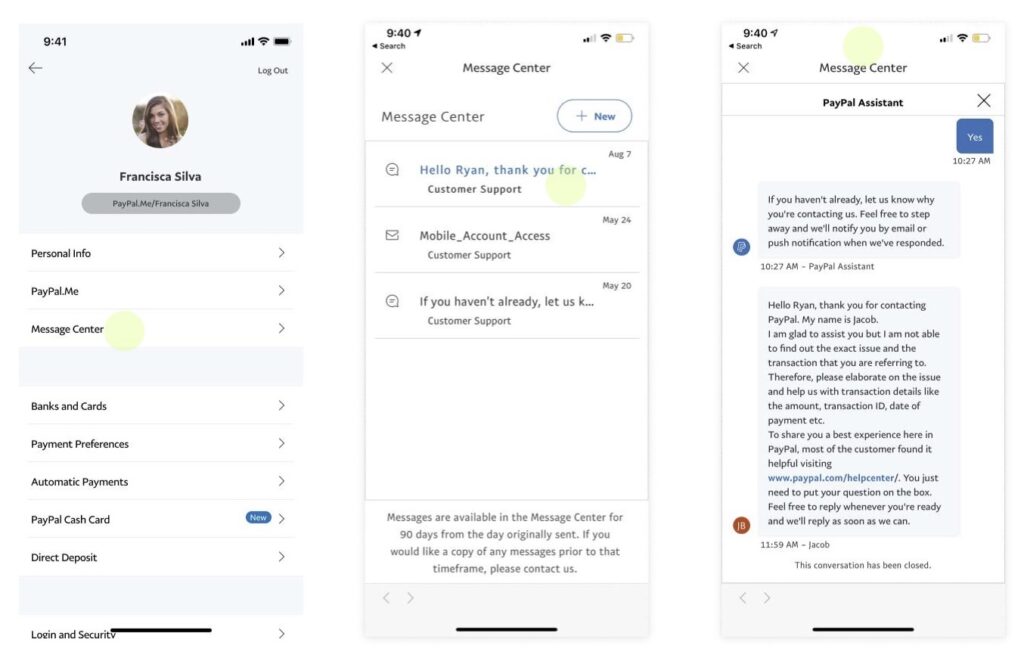
Iterations:
- Crafted narratives and user pathways for the desired experiences.
- Demonstrated how internal technology catered to user requirements.
- Created a range of exploratory wireframes with different levels of detail for diverse stakeholders.
- Conducted presentations for stakeholders at the executive level.
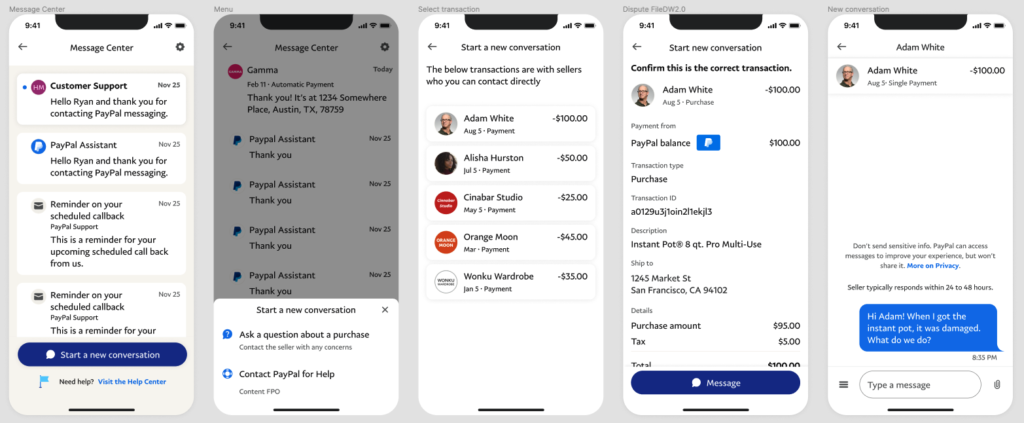
We refined the accessibility of key features by enhancing entry points in the main menu and transaction details. These improvements empower users to initiate conversations and receive assistance from merchants directly. The design boasts full native support, incorporating a range of tools and features to maintain user awareness of the context.
Planning & Research
- Facilitated workshops to align on UX strategy, define feature priorities, and understand user requirements.
- Executed comparative usability studies on messaging interfaces across social media, financial, email, and team collaboration platforms.
- Developed UX research plans to systematically capture user insights and design implications.
- Conducted qualitative interviews to gather deep insights from key user groups and stakeholders.
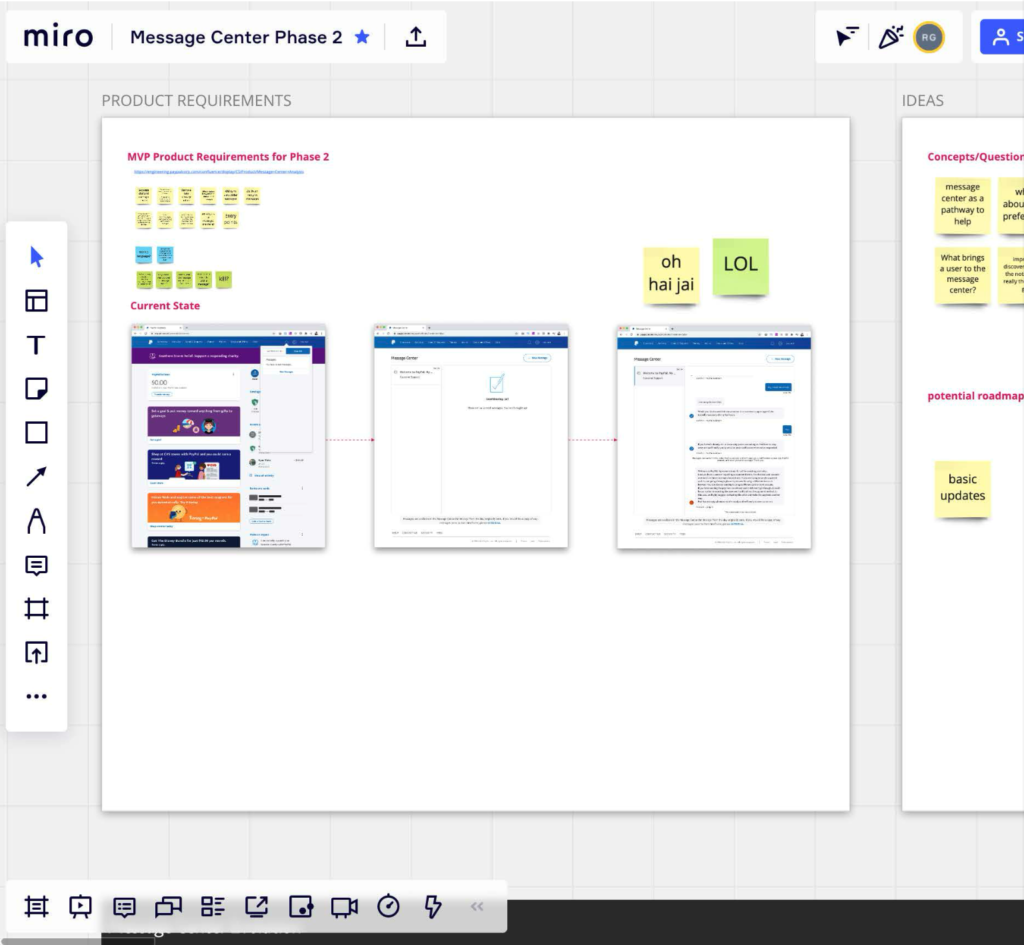
Utilized MIRO for cross-team collaboration on concepting, storyboarding, and research.
Collaboration:
- Implemented guidelines for engagement and feedback to ensure efficient and productive design processes.
- Kept consistent daily communication with the Product, Engineering, and Design Leadership teams through Slack and Teams calls.
- Created a framework to determine the appropriate times for escalation and non-escalation of issues.
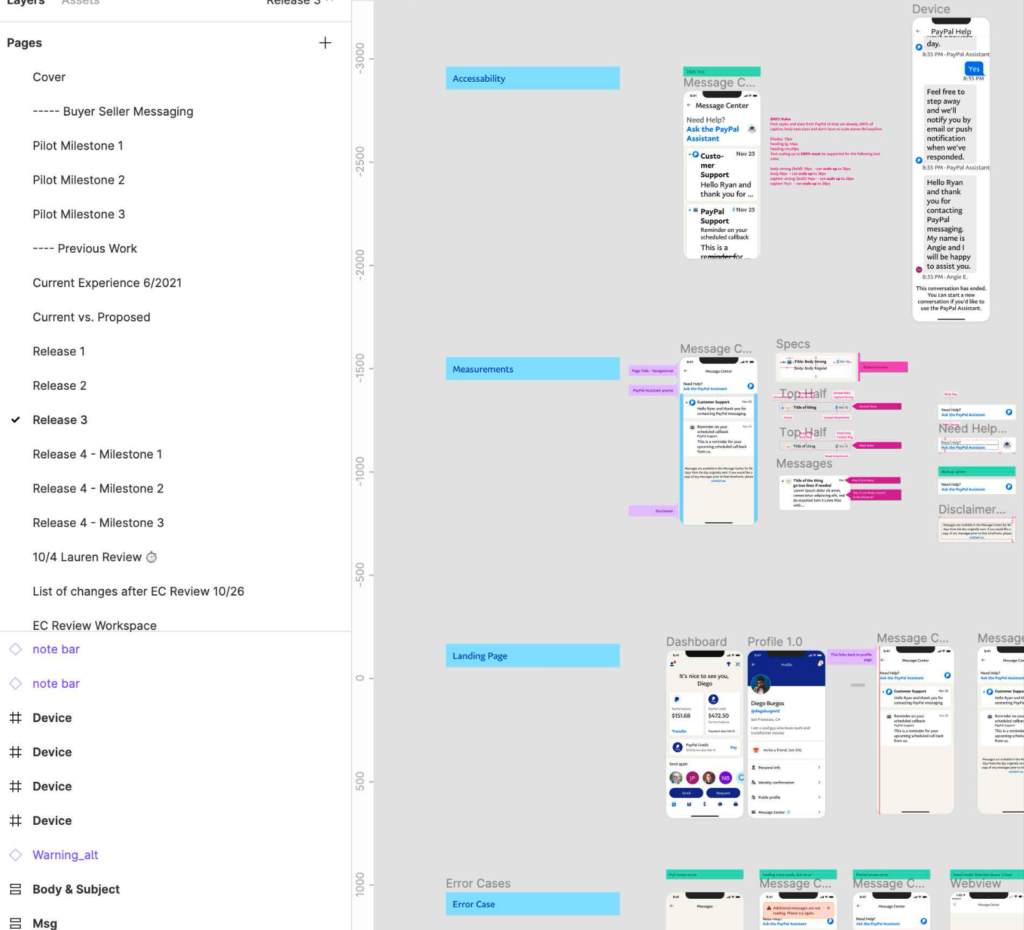
Documenting atomic level components, flows, and accessibility requirements for Engineering handoff.
Swift design iterations:
- Enhanced the visual styling and integrated updated PayPal UI kit components.
- Refined the interface to clearly highlight new and active messages.
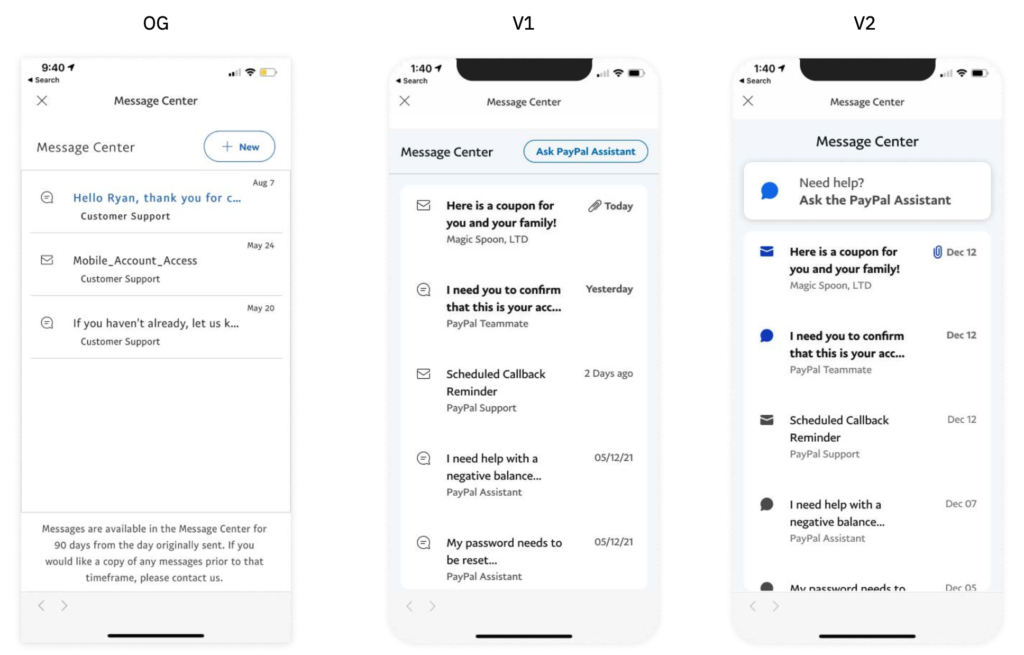
- Enriched the interface with additional content and context for users.
- Established a direct pathway to customer support, improving user assistance.
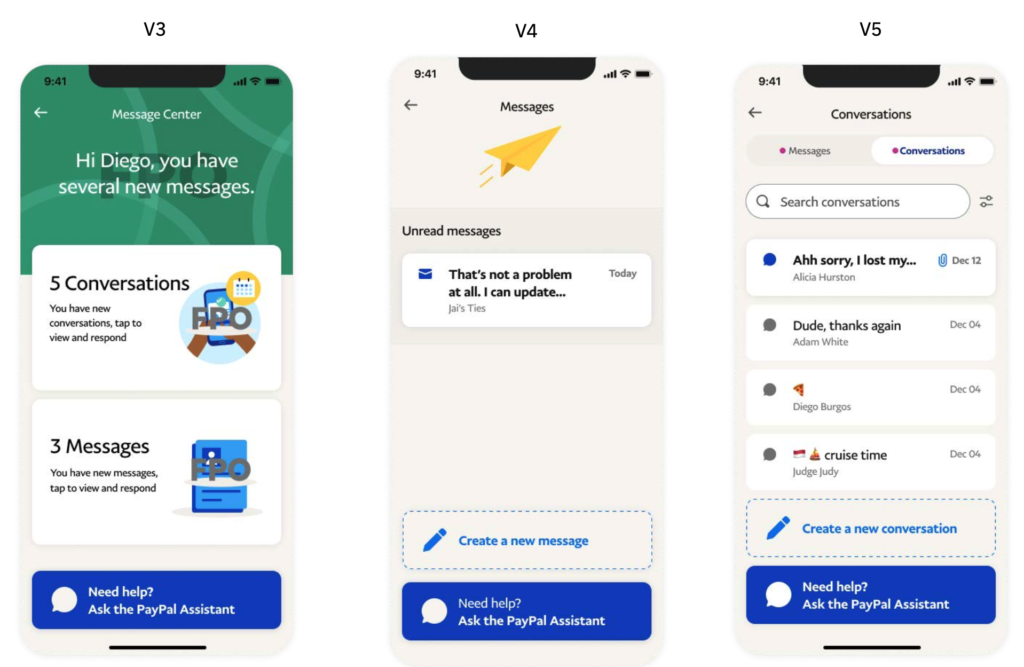
- Updated the design to be consistent with the latest PayPal UI kit standards.
- Successfully refined the buyer-seller conversation flow.
- Initiated the development of future features and brainstormed innovative ideas.
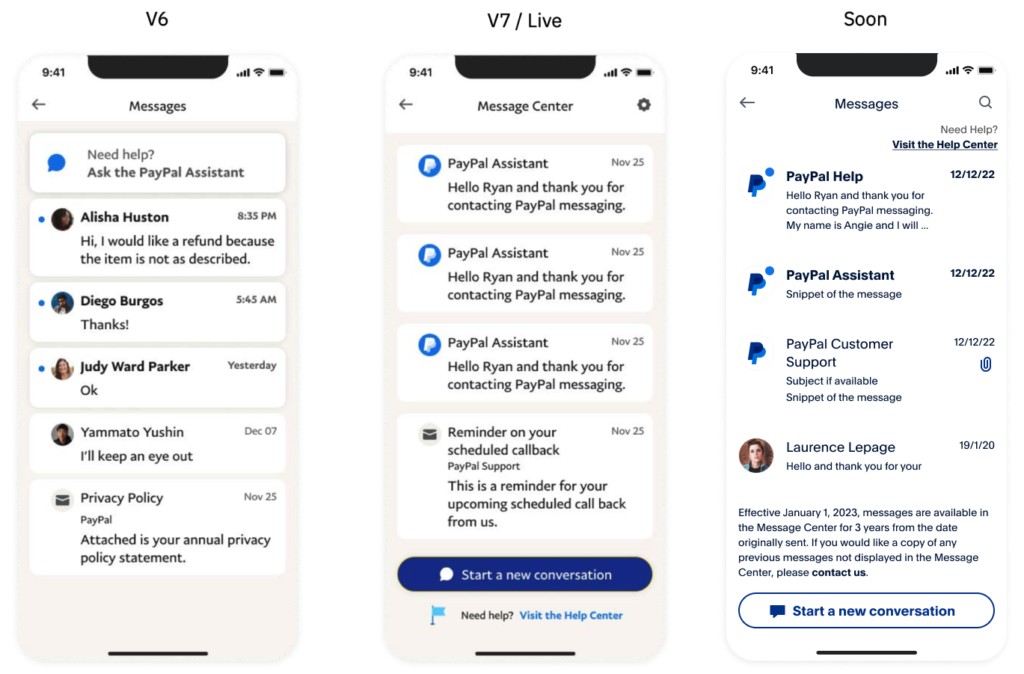
Enhance visibility & transparency:
- Crafted storylines and user flows to depict the intended user experiences.
- Demonstrated the alignment between our internal technology and user requirements.
- Created a series of exploratory wireframes, ranging in fidelity, tailored for different stakeholder groups.
- Conducted presentations for executive-level stakeholders, showcasing our developments.
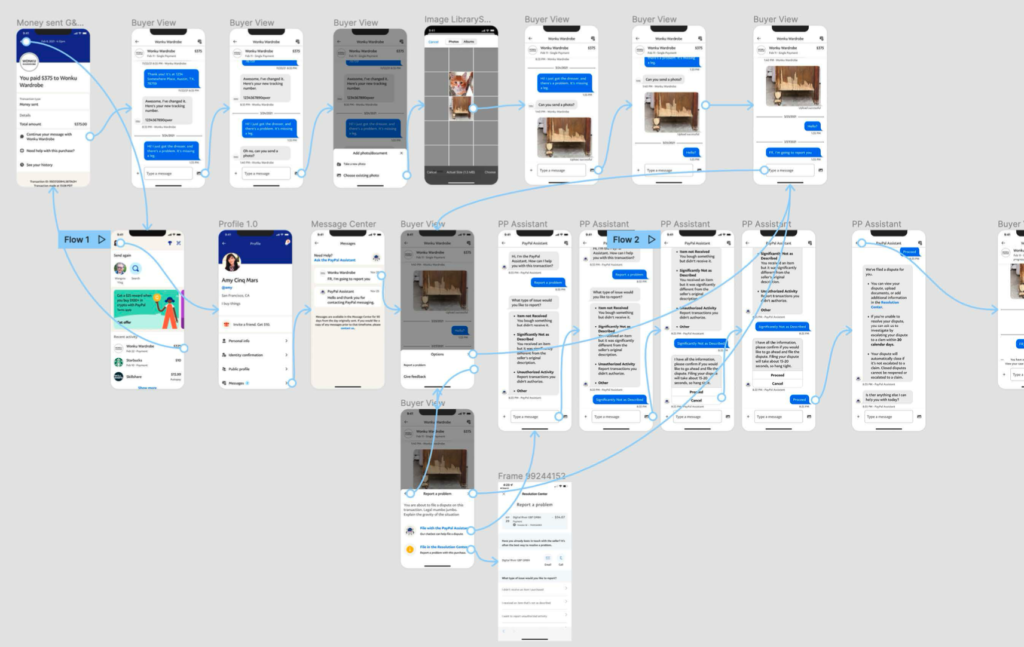
Connecting screens in Figma to output clickable prototypes for presentations and user testing.
MVE
One user journey scenario begins in the Message Center, where the user decides to initiate a conversation regarding a recent purchase. They select the transaction in question, are then presented with the detailed view of the transaction, and from this interface, they have the capability to directly message the other party involved in the transaction.
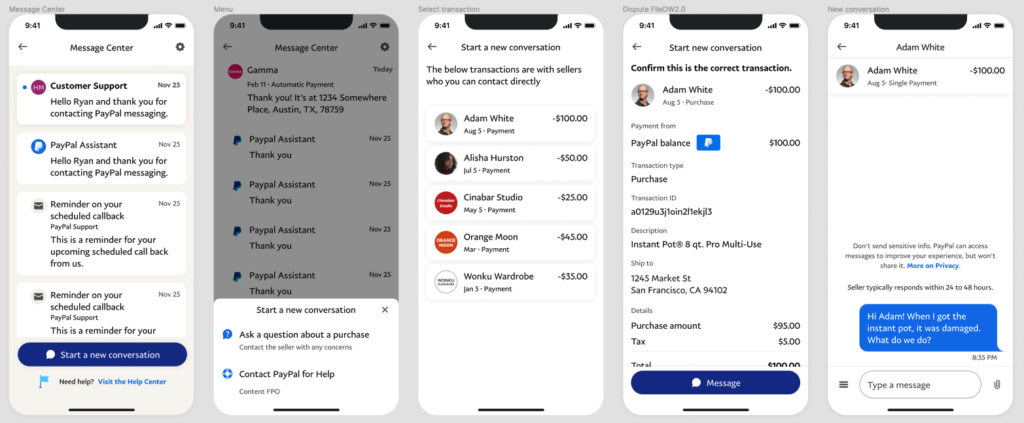
Cross-functional team efforts:
- Delivered presentations to the core design system team, contributing new patterns to the design library.
- Collaborated with the Activity and Disputes teams to synchronize the user experience, uncovering new opportunities for entry points and data sharing.
- Focused on weaving our specific user flow seamlessly into the broader end-to-end user journey.
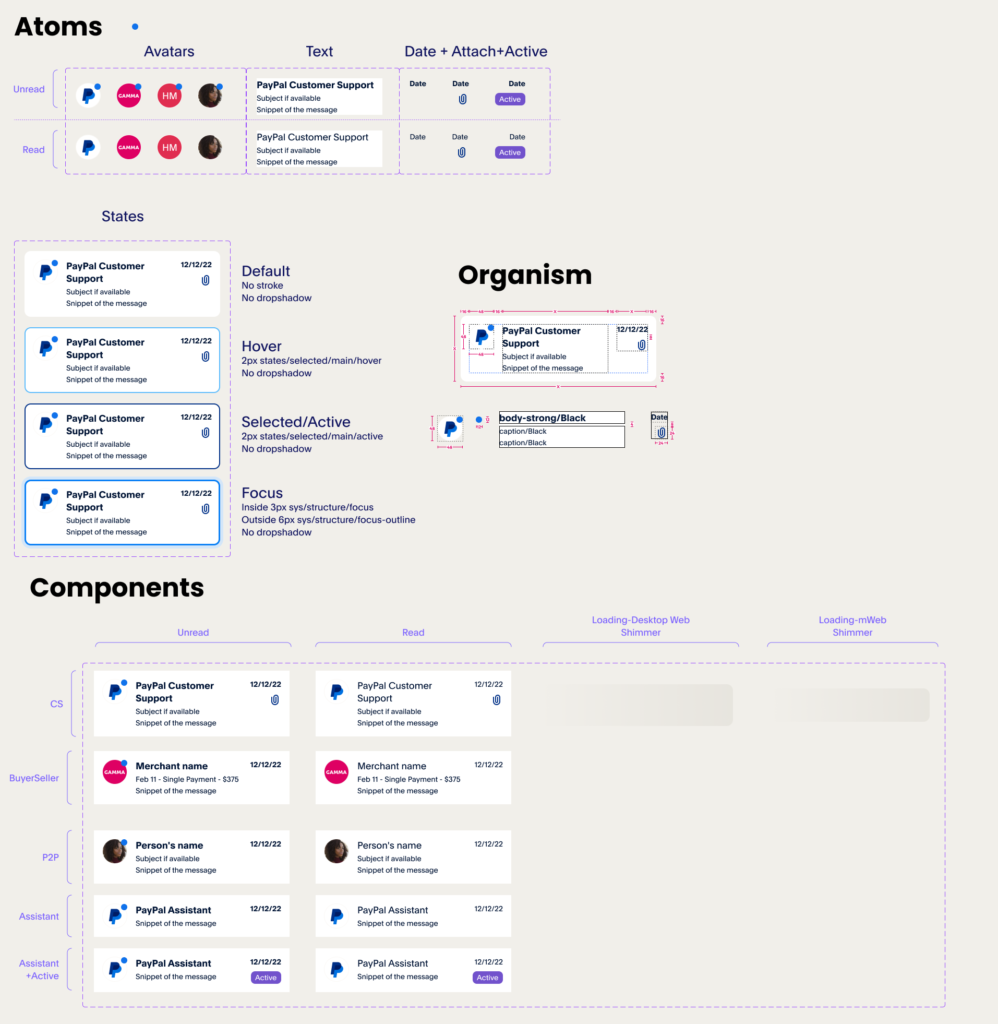
Targets for Q2 of 2022 – Design KPIs:
- Duration of user engagement within the Message Center.
- Number of disputes recorded after implementation.
- Conduct feedback sessions with small business customers.
- Level of user interaction with the PayPal Chatbot.
- Reduction in the rate of customer service contacts.
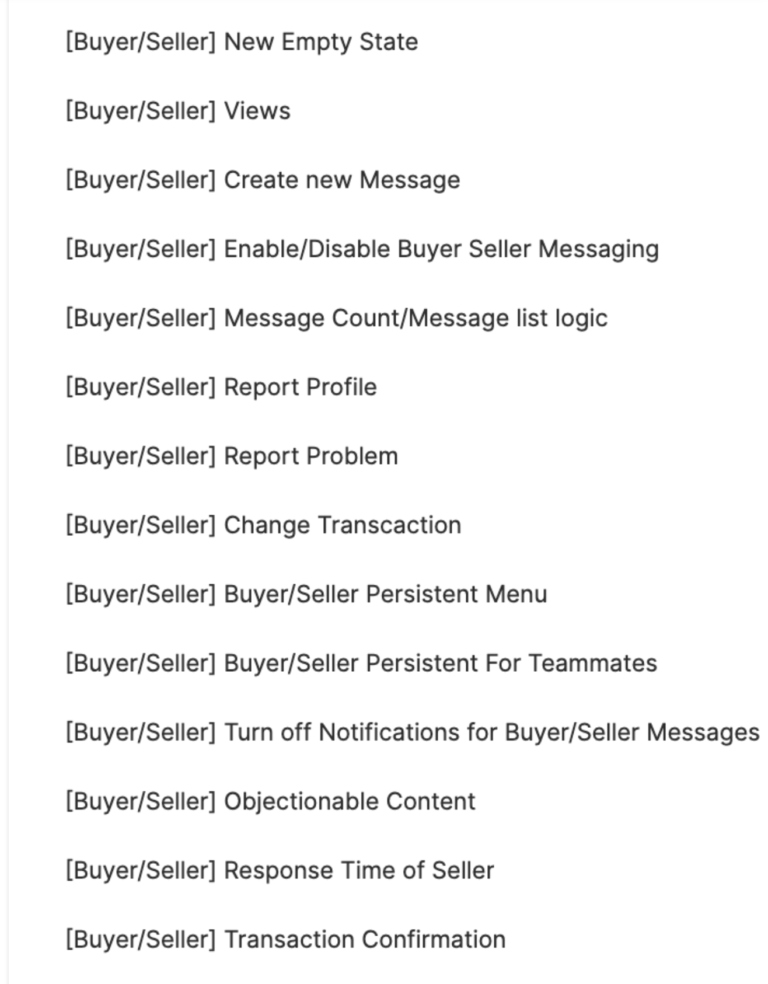
Key Takeaways:
- Utilizing Figma components significantly streamlines the process of applying updates across numerous frames, especially beneficial when the design system undergoes changes.
- Prioritizing the alignment of design work with both business objectives and user needs is crucial for fostering a unified motivation within the team and beyond.
- Instead of designing within the limitations of the existing design system, concentrate on meeting user needs first, then adjust the system accordingly to accommodate those needs.
As of today, the project achieved success in creating a robust platform capable of managing a significant volume of conversations. It also provided users with the functionality to view their past conversations within the messaging interface for up to three years. Key foundational design components were developed to support these conversations, as well as to lay the groundwork for future phases that would introduce enhanced user functionality, privacy, and security features. Despite its achievements, the project has been deprioritized and temporarily paused to redirect resources towards more immediate design and development initiatives, such as the integration of a Generative AI-powered chatbot.
